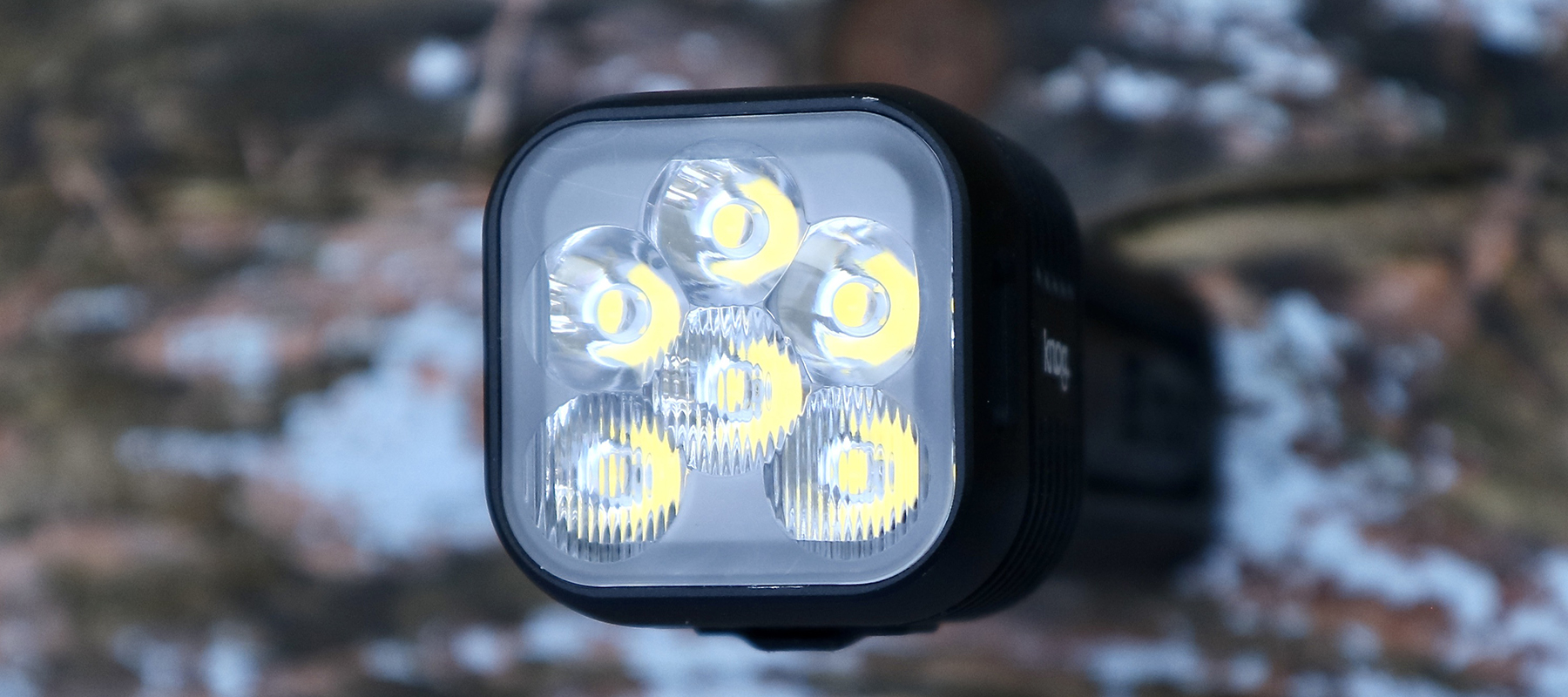Bike Perfect Verdict
The Blinder 1300 is a versatile light that on full power packs a punch. However, the candle that burns twice as bright burns half as long and the Blinder doesn’t last much longer than 50 minutes on full beam. You can double the run time by halving the output but then it’s not quite bright enough.
Pros
- +
Compact lamp and lightweight
- +
Smart on/off button functions as battery and charge indicator
- +
Bar and helmet mountable
Cons
- -
Limited run time
- -
No charging cable or plug
- -
Only a partial helmet mount is included
Why trust BikePerfect
Knog’s previous off-road night riding light was the PWR, a modular system with lots of built-in accessories and add-ons. The Blinder 1300 doesn’t quite have the output of the PWR but, being an all-in-one design, it does away with the cabling, and separate battery mounting and can be mounted as a helmet light without having a cable running down your back.
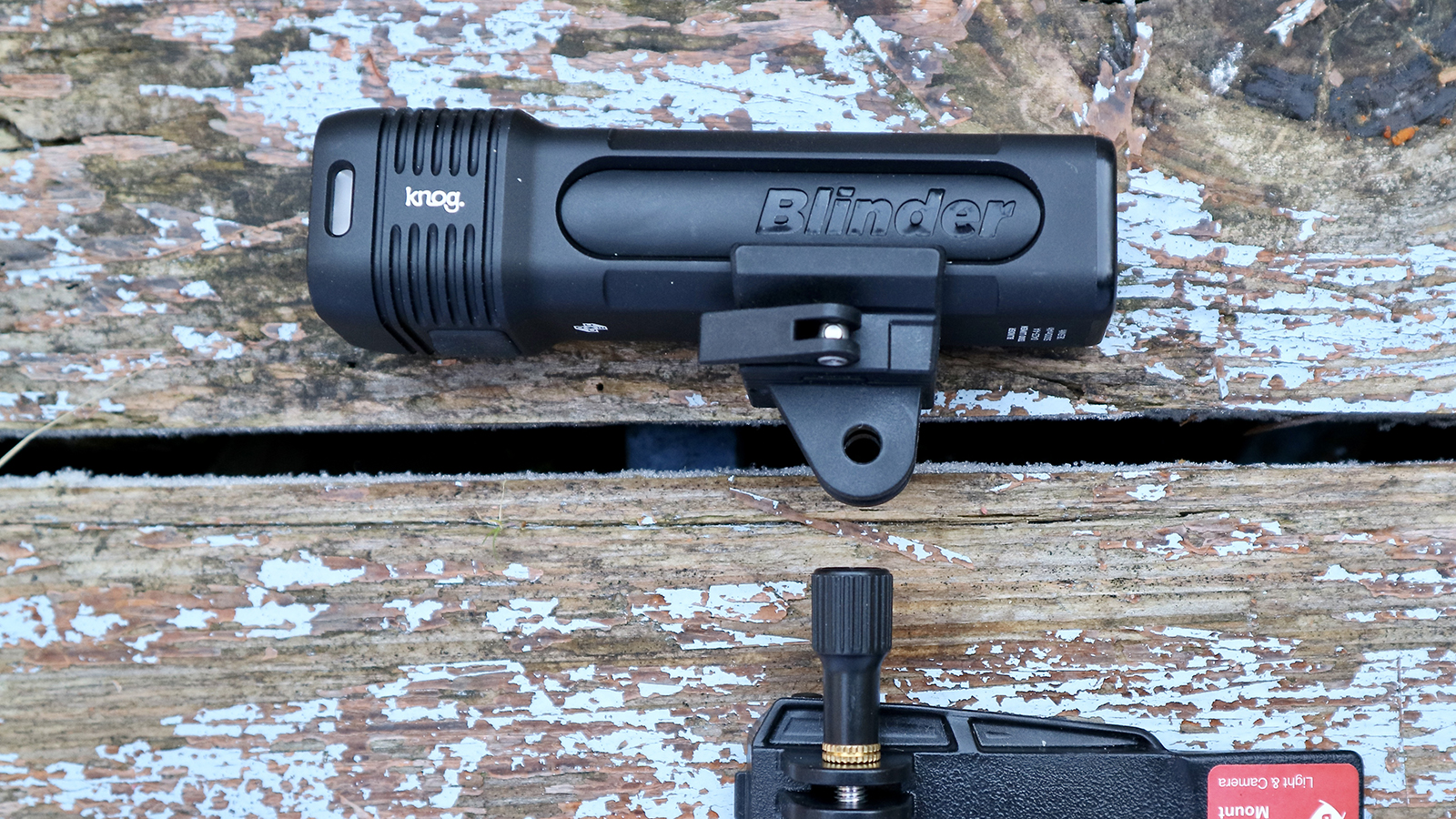
Design and specifications
The Blinder 1300 has five, pre-programmed light settings – high, medium and low beams, as well as pulse, strobe and eco modes. The latter are road-focused but if you’re limping home on low power, they mean you won't be riding completely in the dark.
Accessing the modes is done via a standard push-button on/off switch but this also doubles as a battery life indicator. A brief press displays a color – green is 100-50 percent charge remaining, yellow is 50-25 percent, and red is under 25 percent. This button also functions as a charge indicator pulsing yellow before turning green when the battery is fully charged.
Like most lights, burn time is dependent on the mode used but at just over 75 minutes on high beam, the Blinder 1300 is a little underpowered for a light of its size and class. Dropping the lumen does increase the run time – you get nearly eight hours on low and 120 hours on Eco mode – but these settings are not that viable off-road.
The Blinder 1300 runs off a 3.7V lithium-ion battery. It’s lightweight, charges quickly and you’re also not going to run into any major issues if you leave it trickle-charging overnight.
The light has a durable CNC-machined aluminum construction and Knog claims it’s 100 percent waterproof, which is handy for those soggy winter rides we’ve all had this year.
Charging is via a USB-C, but Knog doesn’t include one in the box, nor a compatible plug. To be fair most households should have one, but if you don’t it will add to the cost.
What is included in the box are two mounts – a clamp to attach the light to a handlebar and a Go-Pro attachment. Unfortunately, the latter is only the male part, the GoPro base is not included.
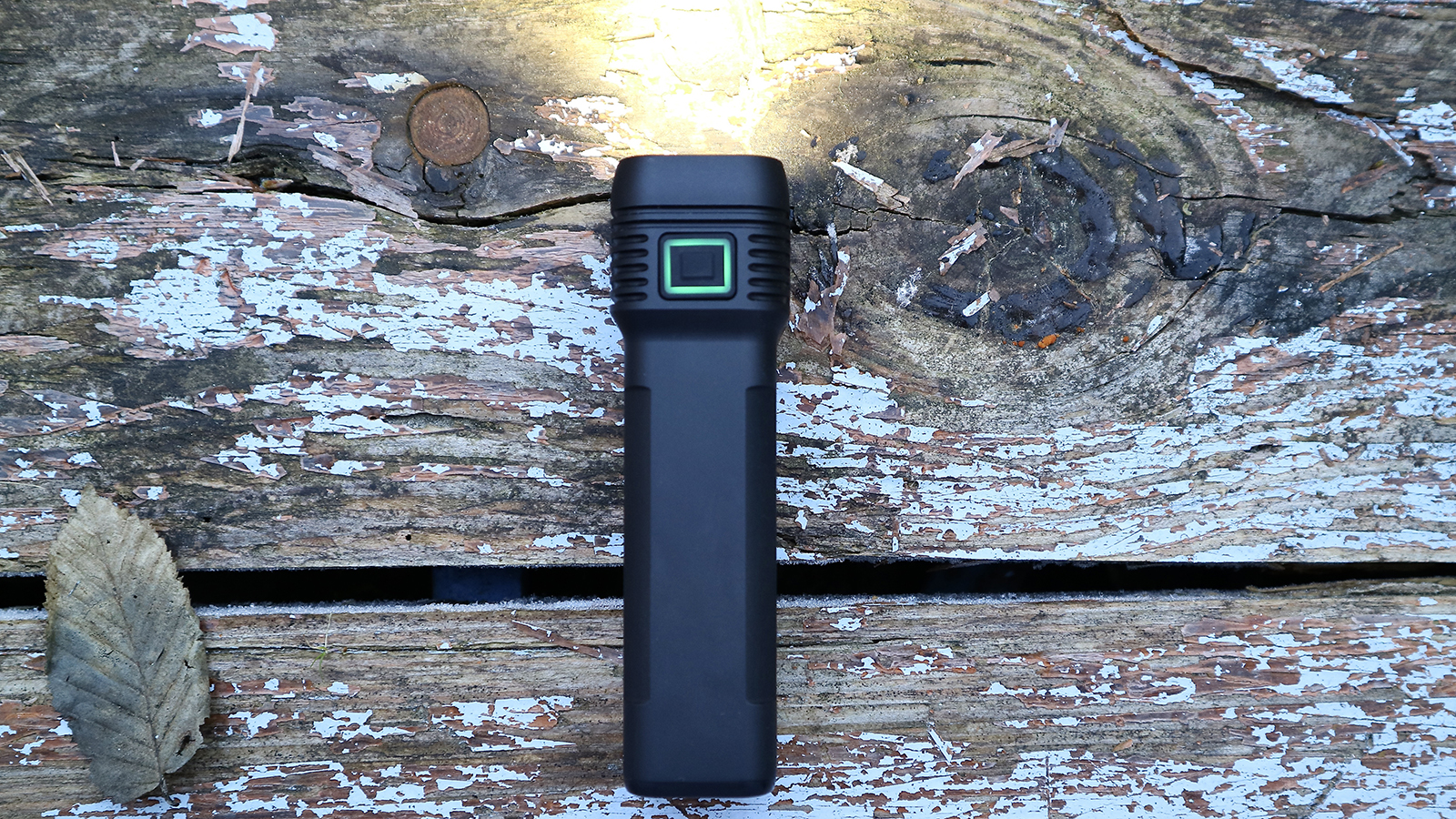
Performance
Although the Blinder does put out a good amount of light, the beam has a slightly yellow tinge compared to some top-end brands and lacks the clarity for really picking out detail. Six mini LEDs are crammed in the lamp unit and, while it has a slightly focused beam, with a distinctive central halo it doesn’t cut through if you’re running an additional bar light. And you will need to do that because this light is not powerful enough on its own.
What is neat about the Blinder is both mounts clip around the body of the light in the same way and are secured with a little cam lever – you don’t have to dismantle any of the components. And the light can still slide backwards and forward in the clamp, which is handy if you’re running it up top and you bash it on a tree. If you run the GoPro thumbscrew slightly loose, you can also vary the angle as you ride. The only downside of the GoPro mount is it’s pretty tall and the Knog also mounts on the crown of the helmet, reducing clearance.
Like most lid lights, it’s impossible to see the battery life indicator when riding and while you can remove the lamp or your helmet to take a look, it’s not ideal. Knog does have a smartphone app that allows you to check the run time and modify the light output remotely, but for some reason it only works for the older PWR lights. The Blinder 1300 isn’t supported.
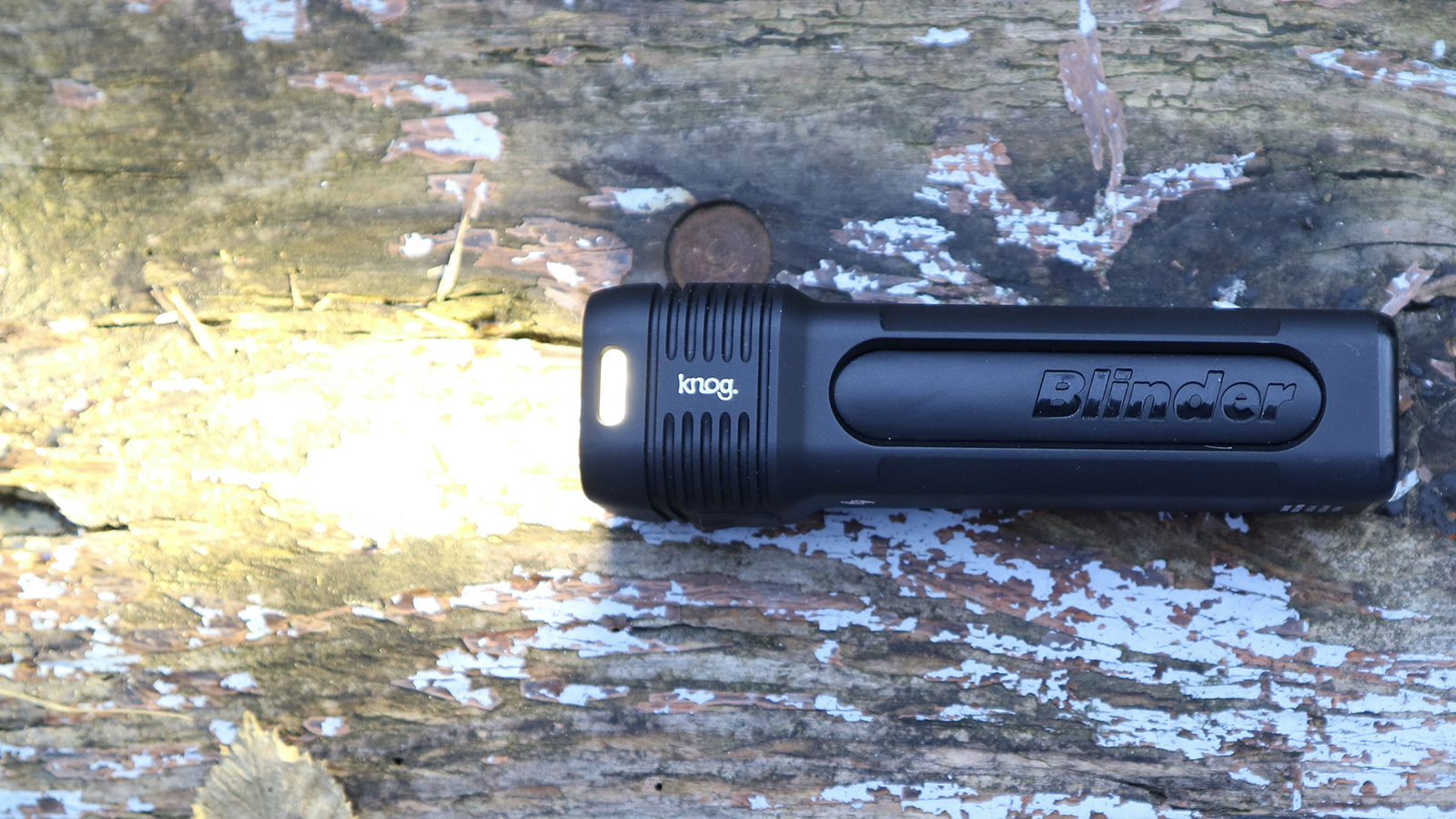
Verdict
For proper off-road night riding the Blinder 1300 needs to be paired with something else but when we did that it got a bit overpowered. To hold its own, this light needs a tighter more focused beam or more grunt. It could also do with a bigger battery because de-powering the light to increase the run time, means you’re left with a light that isn’t bright enough to cut through whatever you have on the bar. The Blinder 1300 is great for road riding or as backup, but as the primary light for riding off-road use, there are better options out there.
Tech specs: Knog Blinder 1300 Front Light
- Price: $99.95 / £99.99 / €99.95
- Weight: Lamp/battery 175g
- Modes: High, medium, low
- Lumen: 1,300, 650, 230
- Battery: 5,000 mAh Li-ion
- Stated run time: 1.5, 3, 8 hours
- Charger: Not included
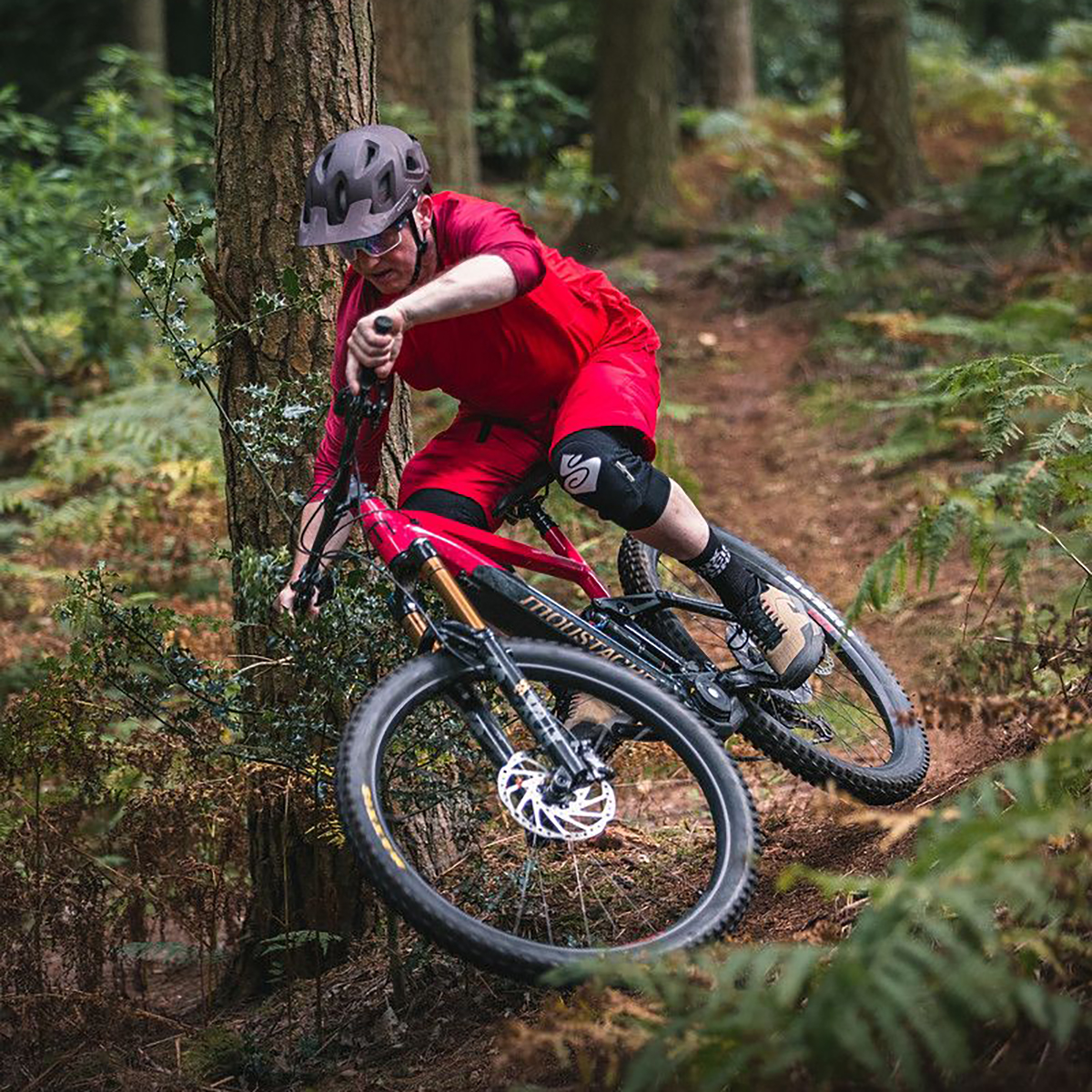
Paul has been testing mountain bikes and products for the best part of 30 years, he’s passed comment on thousands of components and bikes, from the very first 29ers and dropper posts to latest e-MTBs and electronic drivetrains. He first put pen to paper for Mountain Bike International magazine but then contributed to What Mountain Bike, Cycling Today and Cycling Weekly magazines before a 20 year stint at MBR magazine. An ex-elite level XC racer, he’s broken more bones than records but is now sustained on a diet of trail building, skills coaching and e-bike trail shredding.
